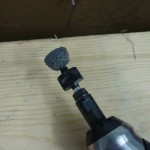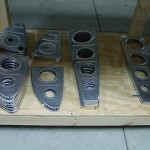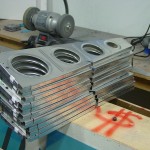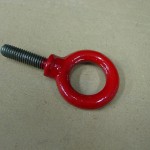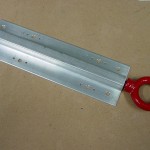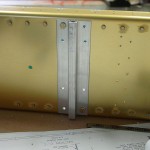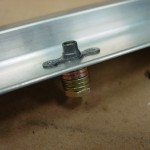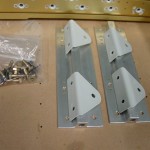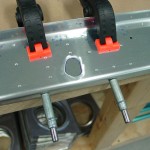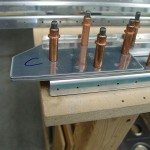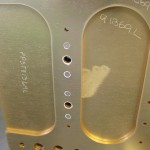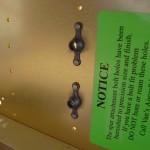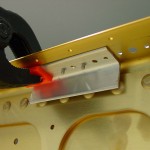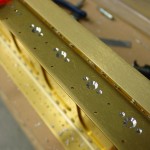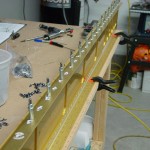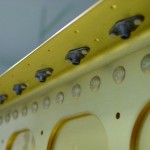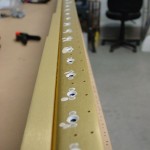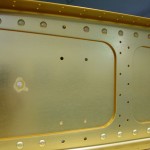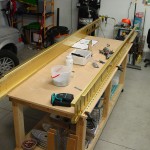I test-fit some deburred ribs into the main wing spars today, and I think I’ve discovered a problem. The spar flanges on both spars appear to be bent at the opposite angle of what they should, resulting in the ribs not fitting at all when in the correct orientation, but fitting perfectly when upside down. A photo tour follows, and I’d appreciate knowing how this compares to others — am I crazy and somehow have it all wrong, or do I have spars that are bent wrong? (Click any thumbnail for a full-resolution image.)
First, a photo of the plans section (DWG 11, Section A-A) where you can see that the upper flange should be bent downwards, toward the center of the spar, and that the bottom flange should be bent downwards, away from the center of the spar.
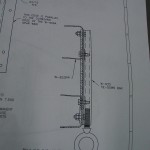
Here’s the ID of the spar I’m working with, clearly marked L, and a picture of the inboard end, to show that I have it clamped to the bench in “flight” orientation–note the angle is on the bottom of the spar. The platenuts for the access panels are on the bottom side, as well.
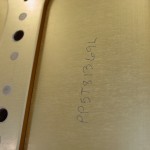
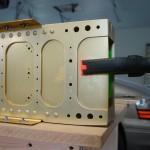
Here is a shot from the inboard end looking out. The upper flange clearly bends upwards, rather than downwards.
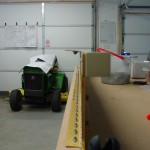
Hold up a rib (since this is the inboard end, this is a W-910-R rib) to the spar…when the forward flange of the rib is parallel to the spar web, the angles of the upper and lower flanges seem to be exactly opposite of the corresponding spar flange. Also, a wider picture to show that the rib is correctly oriented–note the cutout for the J-stiffener; and close shots of the top & bottom.
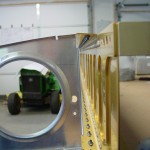
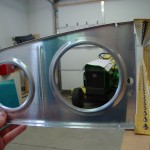
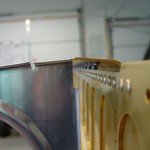
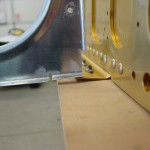
Flip the rib upside down and you’ll see that it fits into the spar with near perfection…unfortunately, the J-stiffener slot is now on the bottom of the wing, and the holes for the flap hinge bracket are on the top. Not going to work! (In fact, the manual is very specific about not building wings upside-down…)
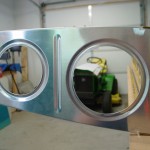
How’s the other spar? Well, clamp them both upright in mirror-image…same problem.
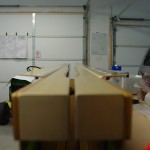
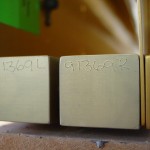
The situation is the same on the opposite end of the spar. (The L spar is now on the right side of the photo, and the rib pictured is a W-912-R.)
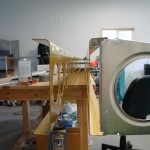
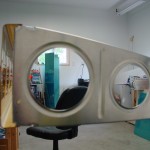
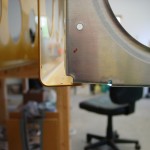
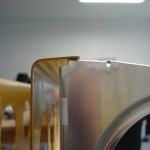
Initally, I did accidentally try to fit the ribs upside-down, since that’s the way they were naturally fitting into the spar; they would only go in one way because of the angles, so I assumed that was the correct way. I found that the bottom spar flange was “gapping” as described in threads here, here, and a more recent one from early July here (links to the related build log: problem and solution). I did try adjusting the angle of the lower flange slightly to close the gap, as was recommended to the builders in those links (and also in the latest RVator…). However, the minor adjusting I did was a) to only ONE flange of the spar (the lower flange, which, as you can see in the pictures, is less off-angle than the upper flange), and b) only a couple 32′nds, not enough to be the cause of this problem. After looking again at the plans and some photos, I realized it was upside-down, and then discovered that there was a major fit problem with the ribs.
Do I have it all wrong? Or is it truly messed up? Comment or email rv9a@pacificrimsound.com















